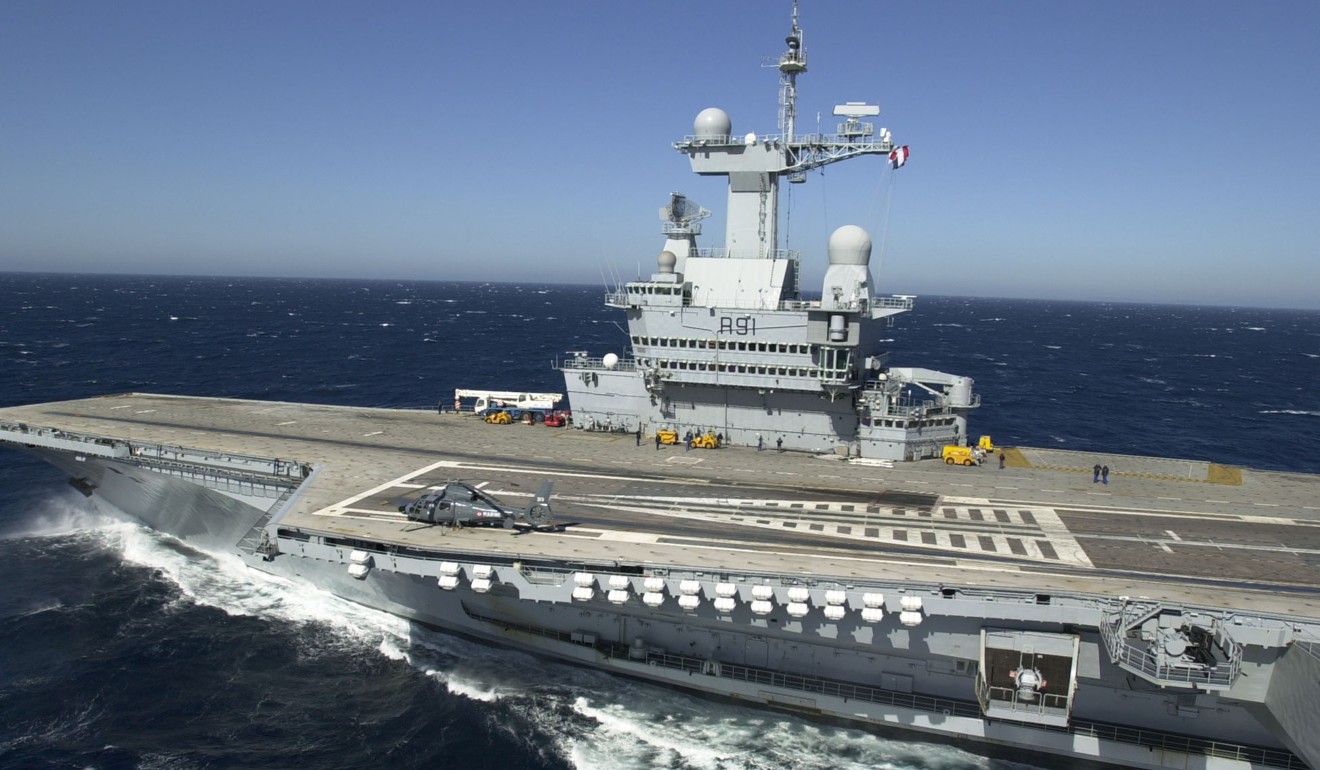
China aims for nuclear-powered aircraft carrier by 2025
Technology key to sending the vessels on long missions but many barriers still to be overcome, analyst says
China might have a nuclear-powered aircraft carrier in the water by 2025 to bolster its maritime defences, according to the country’s main supplier of warships.
China Shipbuilding Industry Corporation (CSIC), which refitted China’s first aircraft carrier and built its second, did not specify which vessel it was referring to, but a statement on its website on Tuesday was the company’s first confirmation that a nuclear-powered aircraft carrier was in the works.
China’s two existing aircraft carriers use conventional oil power.
CSIC also said it was working on a new type of nuclear submarine, submarine artificial intelligence combat systems and a “comprehensive electronic information system” for maritime battles.
“We must … provide high-quality weapons and equipment for the navy’s strategic transformation towards a blue-water force in 2025,” CSIC said. “China’s security environment is undergoing deep changes, and maritime security threats are on the rise.”

But CSIC updated the statement on Wednesday, saying only that it was working on “some key technologies”.
Beijing-based naval specialist Li Jie said there were several technical barriers to building a nuclear carrier but they could be overcome by 2025.
“The engineers have got experience with nuclear engines on submarines, but plenty of work still needs to be done to apply that to big vessels,” Li said.
“France has showed that it’s not simply a matter of installing more reactors. It has to be redesigned and China has to overcome all the difficulties on its own.”
He said the engineers had to work out how to handle the radioactive materials and resolve various safety issues.
The US is the only country with mature nuclear technology powering bigger vessels. It has one Ford-class and 10 Nimitz-class nuclear-powered aircraft carriers in service and one more Ford-class vessel under construction.
France is the only other country with a nuclear-powered carrier – the Charles de Gaulle – but that has been plagued by engine problems.

Nevertheless, China will need to go down the nuclear power route if its aircraft carriers are to be able to go on long missions on the high seas. Nuclear power will also be key to firing up an advanced electromagnetic aircraft launch system, in contrast to the ski-jump launches now in use.
China’s first carrier, the Liaoning, is a Soviet Kuznetsov-class vessel bought from Ukraine in 1998 and refitted at CSIC’s Dalian shipyard. It entered service in 2012.
The shipyard then used the Liaoning to build China’s first home-made carrier, the type 001A, which was launched in April. The vessel is being fitted out and expected to be handed over around 2020.
According to a report last month, the Jiangnan shipyard in Shanghai, a subsidiary of China’s other major shipbuilder China State Shipbuilding Corporation, was close to completing a dry dock for China’s third carrier, which will also be conventionally powered.

